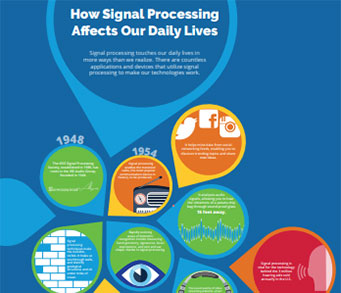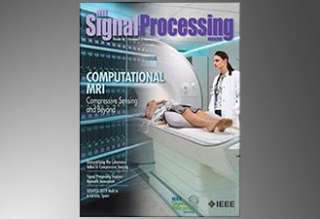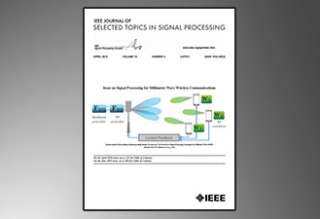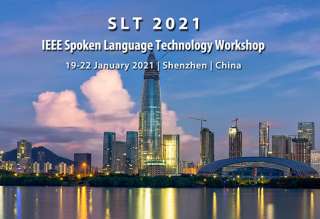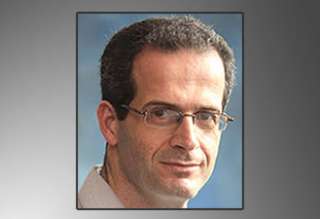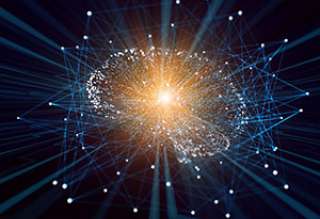SPS Feed
Top Reasons to Join SPS Today!
1. IEEE Signal Processing Magazine
2. Signal Processing Digital Library*
3. Inside Signal Processing Newsletter
4. SPS Resource Center
5. Career advancement & recognition
6. Discounts on conferences and publications
7. Professional networking
8. Communities for students, young professionals, and women
9. Volunteer opportunities
10. Coming soon! PDH/CEU credits
Click here to learn more.
The Latest News, Articles, and Events in Signal Processing
Structural equation models (SEMs) and vector autoregressive models (VARMs) are two broad families of approaches that have been shown useful in effective brain connectivity studies. While VARMs postulate that a given region of interest in the brain is directionally connected to another one by virtue of time-lagged influences, SEMs assert that directed dependencies arise due to instantaneous effects...
We address a robust detection problem for MIMO radars in Gaussian noise with unknown covariance matrix, for the mismatched case where the nominal transmit (or receive) steering vector may not be aligned with the true transmit (or receive) steering vector. Subspace models are adopted for taking into account these mismatches.
Substantial progress has been made recently on developing provably accurate and efficient algorithms for low-rank matrix factorization via nonconvex optimization. While conventional wisdom often takes a dim view of nonconvex optimization algorithms due to their susceptibility to spurious local minima, simple iterative methods such as gradient descent have been remarkably successful in practice.
Nonlinear static multiple-input multiple-output (MIMO) systems are analyzed. The matrix formulation of Bussgang's theorem for complex Gaussian signals is rederived and put in the context of the multivariate cumulant series expansion. The attenuation matrix is a function of the input signals’ covariance and the covariance of the input and output signals.

We are looking to hire a motivated post-doc to work on machine learning and data analytics. The candidate must have a strong background in machine learning, AI, signal processing, optimization methods, probability, and statistics. The candidate must have a Ph.D. in relevant fields.
Required:
Submission Deadline: November 14, 2019
Call for Proposals Document
White Paper Due: March 1, 2020
Publication Date: March 2021
CFP Document
Manuscript Due: May 1, 2020
Publication Date: January 2021
CFP Document
Lecture Date: November 18, 2019
Chapter: Chile
Chapter Chair: Nestor Becerra Yoma
Topic: Data Fusion and Analysis Through Matrix and Tensor
Factorizations: Uniqueness, Diversity and Applications
September 22-25, 2020
NOTE: AVSS 2020 has been postponed to 2021
Location: Washington, DC, USA
January 19-22, 2021
NOTE: Location changed to--Virtual Conference
Lecture Date: November 8, 2019
Chapter: Central Indiana
Chapter Chair: John Mott
Topic: Privacy-Preserving Localization and Recognition of Human Activities
Lecture Date: December 6, 2019
Chapter: Rio de Janeiro
Chapter Chair: Markus V. Lima
Topic: Optimal Multichannel Signal Enhancement
Audio-Visual Voice Activity Detection Using Deep Neural Networks
Lecture Date: December 4-5, 2019
Chapter: South Brazil
Chapter Chair: Vanessa Testoni
Topic: Audio-Visual Voice Activity Detection Using Deep Neural Networks
Lecture Date: December 2-3, 2019
Chapter: Chile
Chapter Chair: Nestor B. Yoma
Topic: Optimal Multichannel Signal Enhancement
Audio-Visual Voice Activity Detection Using Deep Neural Networks
Imagine sitting in a room where every individual is able to read every other individual’s mind. Would you lose your mind? We are living in an age where many of us have already surrendered our personal privacy to online interfaces either knowingly or by deceptive means.
Today, many devices (e.g., cars and other vehicles) we operate for various tasks (e.g., to go from place A to place B) are changing: in the past, they were characterized by a body and control actuators that allowed us to perform these tasks. These days, they are not simply passive recipients of our instructions;
This article examines the problem of interference in automotive radar. Different types of automotive radar as well as mechanisms and characteristics of interference and the effects of interference on radar system performance are described. The interference-to-noise ratio (INR) at the output of a detector is a measure of the susceptibility of a radar to interference. The INR is derived from different types of interfering and victim radars and depends on the location of both as well as parameters such as transmit power, antenna gain, and bandwidth.
Pages
SPS Social Media
- IEEE SPS Facebook Page https://www.facebook.com/ieeeSPS
- IEEE SPS X Page https://x.com/IEEEsps
- IEEE SPS Instagram Page https://www.instagram.com/ieeesps/?hl=en
- IEEE SPS LinkedIn Page https://www.linkedin.com/company/ieeesps/
- IEEE SPS YouTube Channel https://www.youtube.com/ieeeSPS




